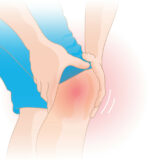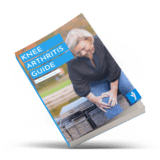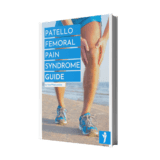
Low back pain and what to do about it
Do you know the moment that you bend over to pick up a pen, toy or laundry and you feel nagging discomfort in your lower back? Well today, we’re going to talk about that feeling “low back pain and what to do about it”.
The feeling of discomfort in your low back is quite normal. By “normal” I am referring to the fact that low back pain is highly prevalent, meaning it occurs a lot around the world. So if you are reading this and you currently experience an episode of low back pain rest assured that you’re not alone in this. Approximately 65% to 85% of people will at some point in their life experience an episode of low back pain. And if we take a look at the most common injuries or complaints we see as a Physical therapist, it is people with low back pain. To paint a picture, we also nowadays refer to low back pain as the common cold of the musculoskeletal system. Because it is just that commonly seen but it usually also has a similar favourable natural course. More on that further down in this blog post.
Now you know that lot of people experience low back pain to some degree during their life. And low back pain can be disabling and become a burden for some people as it may seem that it will never go away. They may have even been told to “just live with it” by other healthcare professionals or relatives having dealt with it too. But in most of the cases, for about 75-90%, the pain will diminish within 4 to 6 weeks. This may seem long and surely longer than the common cold we referred to above but this “natural course” implies that no intervention is necessary for the low back pain to subside. But this raises the question “what to do about it”?
First and foremost, keep on moving! Keep on moving within your painfree range of motion. Research has shown time and time again that by just keeping moving, you are actively assisting your rehab. It’s that simple. The easiest you can do is to go for regular walks in nature. No complicated exercises necessary. If you prefer some yoga/pilates or riding a bike or even going to the gym. Make sure to move as much as possible without aggravating your back pain too much. BUT you don’t have to be afraid to move with a little discomfort, this isn’t bad. Your back is inherently robust and pain or discomfort does not mean that you are causing it any harm or run the risk of damaging anything in your spine. Hence move as much as possible. Movement translates to the amplification of a bunch of healing processes. From increasing blood flow that nourishes the tissues in your back to the release of pain reducing chemicals – all just by moving.
You should limit the time spent resting in bed or sitting for prolonged periods of time. Remaining in one static position for too long will increase the sensitivity in your low back and delay your recovery. Motion is lotion!
But let’s talk about the best exercises for low back pain. A lot of people say you need to start exercising if you have low back pain. And that’s great, for the reason I mentioned before. But to be honest with you, research has not been able to identify the best exercise for low back pain. Back pain is simply too complex and individual to apply a one-size-fits-all approach to it. We would be out of a job if that was the case. But to answer the question I have to return to “keep moving”. And this can again include your favourite activities. For some that may be a yoga routine, for others it may be a walk in the park. Then again others might prefer to pick up their gym lifting routine. All within reasonable levels of discomfort with the knowledge that movement can’t harm or damage the back.
This knowledge or a positive mindset are key in low back pain rehab. Negative thoughts, stress, emotions and beliefs about low back pain are proven to negatively influence the recovery process. These psychological factors can translate to altered movement behavior (e.g. less movement, fearful movement, rigid movement etc.). These thoughts/beliefs/emotions are usually triggered by other health care providers that have an out-dated definition of low back pain that is not in line with current best practice. The media is another big contributor to the spreading of misinformation on low back pain. The common image that is portrayed of the spine is that it is a fragile structured that is easily damaged. That low back pain, while it surely can be disabling, is a curse for a lifetime. That the back has to be protected at all times whereas it is an incredibly robust structure. It’s the center of your body. But we will dive into these myths surrounding low back pain in another blog post.
If you have any questions you can get in touch with us or check out our low back pain rehab guide







One comment
dublaj
10/12/2020 at 09:21
Article writing is also a excitement, if you be familiar with then you can write if not it is difficult to write. Siobhan Ashlin Myrtia
Comments are closed.